I was recently in Southern California preaching at Saddleback Church. While I was there, I had the privilege of doing my radio show from KWAVE, the Calvary Chapel Costa Mesa-owned radio station in Southern California. You can listen to the show I did there with Calvary Chapel Pastor Brian Brodersen here.
CALVARY CHAPEL COSTA MESA’S INFLUENCE
Calvary Chapel Costa Mesa has a rich and vibrant ministry. When Chuck Smith brought his wife Kay and their young family to the small, struggling congregation in the 1960s, who knew the church would soon be in the headlines around the world. The church became for many the mother church of the Jesus People Movement, as it exploded with growth around 1970.
This was the era of hippies, protests of Vietnam, widespread drug abuse and the sexual revolution. Hippies flocked to the warm weather of Southern California. In no small part through the burden of Kay Smith, Pastor Chuck began teaching through the Bible verse-by-verse, exhorting his people to love all for the gospel, including the unkempt hippies who seemed to be everywhere. The church began to reach multitudes of hippies, making global news as Pastor Chuck baptized thousands of hippie-freaks who became Jesus Freaks in the Pacific Ocean. From this single church the Calvary Chapel movement spread. Several years later the Vineyard movement came out of the Calvary Chapel movement as well.
Today there are over 1,800 Calvary Chapels and 2,400 Vineyard churches globally. Many of the largest churches in the United States are Calvary Chapels. It was through Calvary Chapel and its Maranatha! music that much of Christian worship was transformed from the ’70s to now. In fact, your church probably sings more like a Calvary Chapel than you realize. In this interview with Pastor Brodersen he gives some of the distinctives of Calvary Chapels.
The original Calvary Chapel at Costa Mesa has continued to be an influential leader among churches today. I interviewed Pastor Brodersen, Executive Pastor Jordan Taylor, and Outreach Director Lance Emma here when the church reopened for public services in July.
CALVARY CHAPEL’S MINISTRY IN THE PANDEMIC
One of the things that struck me on this visit was the level of community engagement Calvary Chapel is doing. In this visit, as I looked out the window of the radio station, I could see out the window how people from Calvary Chapel were ministering to their community.
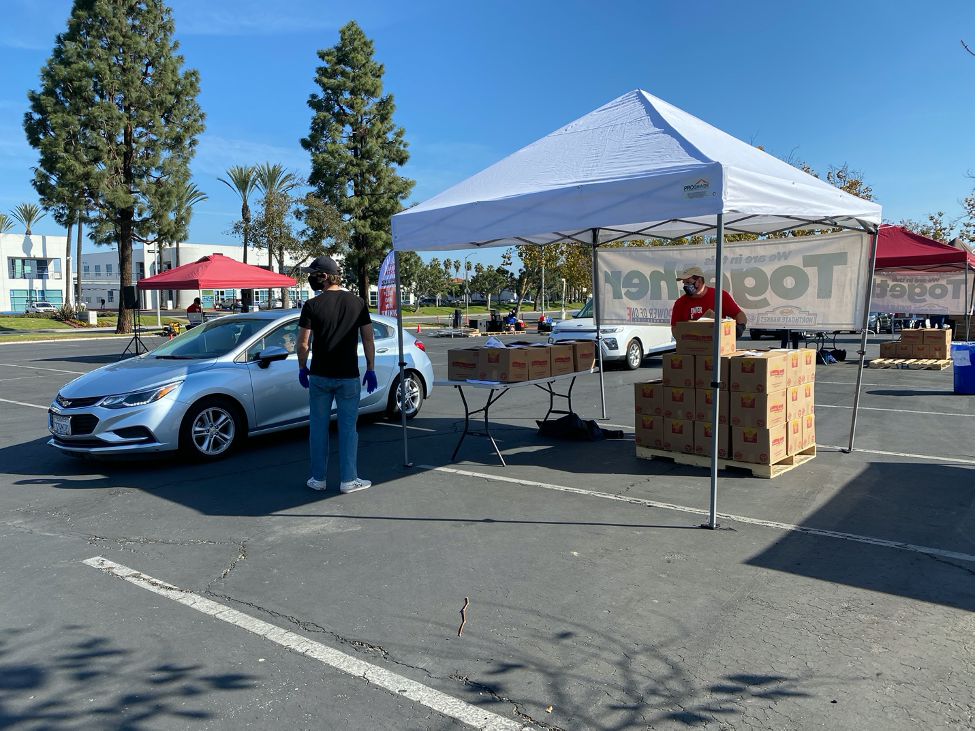
It turns out that they do this every week and do so with rotating partners in ministry. Sometimes people have the perspective that everyone who lives in Southern California is rich but that’s not the case. There are many in need there, and this need has only grown during the pandemic. Calvary Chapel has an extensive Helps ministry that is always engaged with the community. Cars lined up as far as you could see for the food ministry/distribution. As you can see in the picture above, these were delicious boxes of food being distributed.
However, they are not doing this alone; there are actually multiple partnerships working together to serve the community. This includes other ministries like Power of One, which is pictured below.
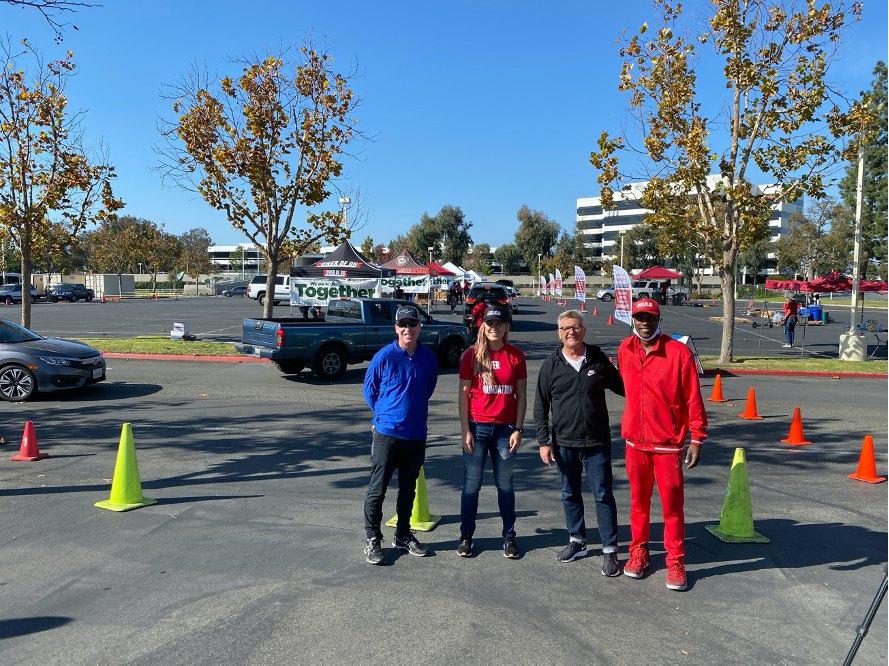
Their partnerships also include a fire department who was there on that day for a toy collection effort, pictured below.
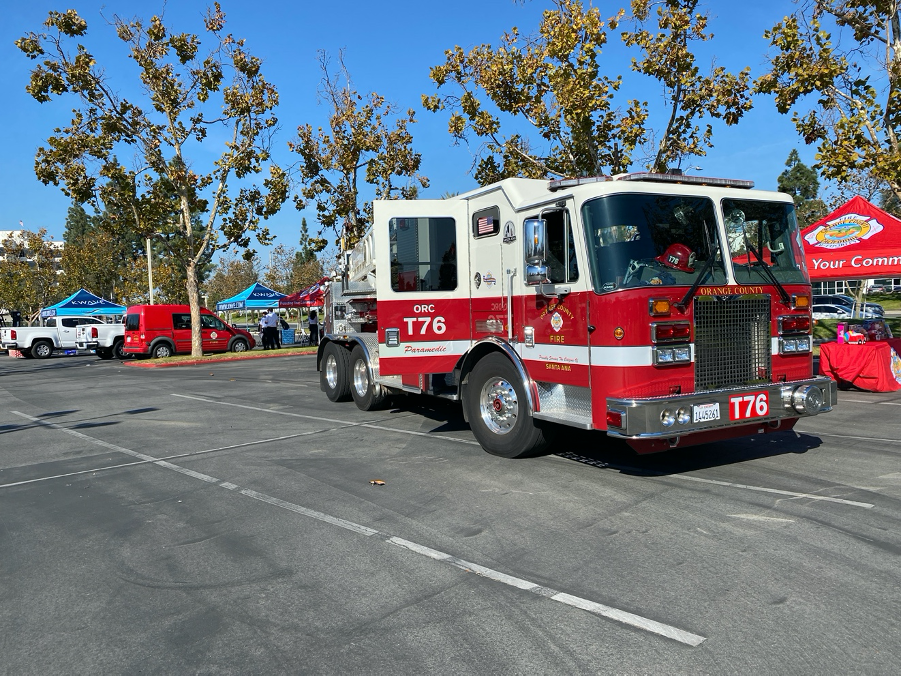
I also found it interesting that they partner with secular organizations who are engaged in the area as well. As they did so they always asked permission for the opportunity to engage people in prayer.
Lance Emma, pictured below with his wife Angie, are engaged in an effort in their community related to prayer. You can see a sign that says, “Need prayer? We’re available.” Cars upon cars are lined up for prayer.
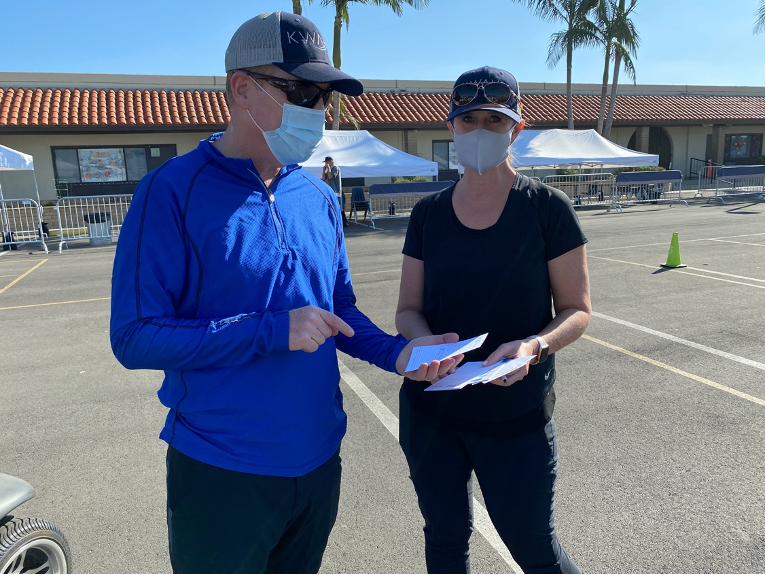
I’m constantly being asked by pastors what are creative ways to engage in the community in this time. Calvary Chapel is an example of a church leading the way. The church follows the protocols of the state, determining to work with officials rather than to spend energy battling them. Their Helps ministry is making a real difference in their community.
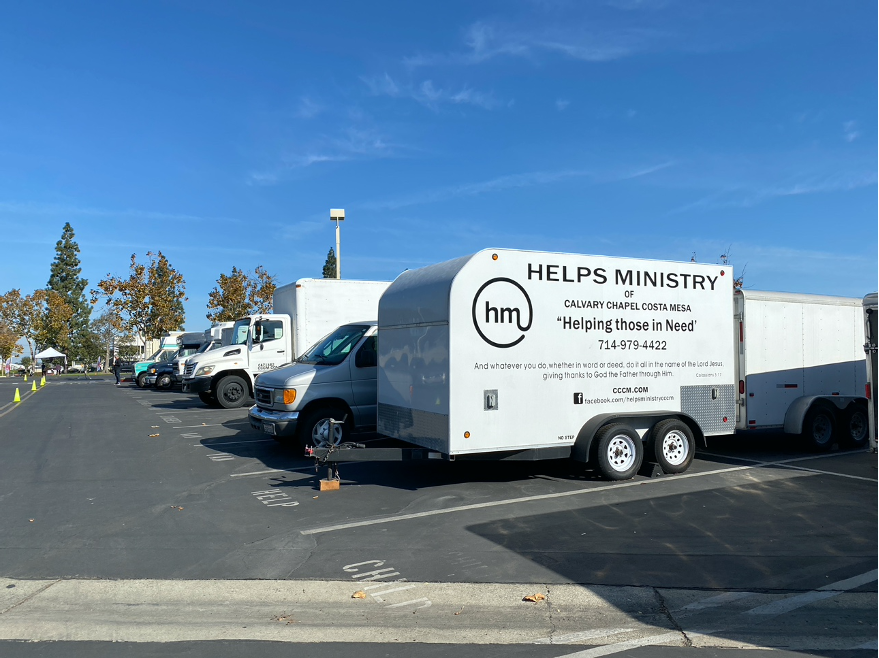
The mission continues come politics or pandemics. It may look different in times like ours currently, but we can learn vital ways to serve our communities that will continue once the pandemic—like the hippie movement of the 1970s—becomes a part of history.
This article originally appeared on The Exchange and is reposted here by permission.

